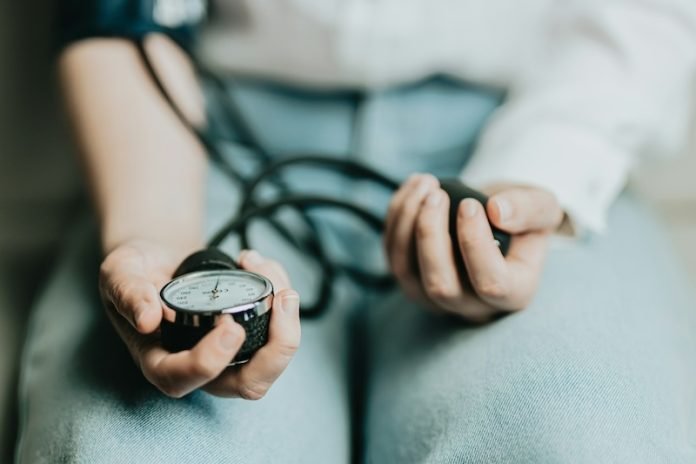
Monitoring blood pressure is like keeping an eye on the pressure inside your car’s tires. Just as too much or too little air pressure can cause problems on the road, high or low blood pressure can lead to health issues.
While automatic blood pressure monitors do most of the work for us these days, knowing how to check blood pressure by hand is a useful skill.
This hands-on method can help you understand your body better, even though it might seem a bit old-school.
Traditionally, blood pressure is measured using a device called a sphygmomanometer (a blood pressure cuff and gauge) and a stethoscope.
The process involves inflating the cuff around the upper arm to temporarily stop blood flow, then gradually releasing this pressure while listening for certain sounds in the arteries.
These sounds give crucial clues about the pressure inside your arteries both when the heart is beating (systolic pressure) and between beats (diastolic pressure).
Step-by-Step Guide to Checking Blood Pressure by Hand:
Prepare and Position: Make sure the person whose blood pressure you are measuring is relaxed and sitting comfortably, with their arm supported at heart level. The arm should be bare, with the sleeve comfortably rolled up.
Wrap the Cuff: Place the cuff snugly around the upper arm, about an inch above the bend of the elbow. Make sure it’s tight but not too constricting.
Locate the Pulse: Use your fingers to find the pulse in the arm, typically located on the inside of the elbow. This is where you’ll place the stethoscope.
Inflate the Cuff: Pump the cuff to inflate it. You’ll need to inflate it to a pressure higher than what you expect the systolic pressure to be. If you’re unsure, inflating to 180 mmHg is a common practice.
Listen and Deflate: Place the stethoscope in your ears and the diaphragm over the artery where you found the pulse. Begin to slowly deflate the cuff. Listen carefully for the first sound, which indicates the systolic blood pressure.
Record the First Sound: The first whooshing or thumping sound you hear is the systolic pressure – the pressure when the heart beats.
Record the Last Sound: Continue to listen as the cuff deflates further. The point at which this sound disappears marks the diastolic pressure – the pressure when the heart rests between beats.
Repeat if Necessary: It’s a good idea to wait a few minutes and repeat the measurement to check for consistency.
Tips for Accurate Readings:
Consistency is Key: Always use the same arm for measurements.
Avoid Common Errors: Make sure the cuff is neither too tight nor too loose and that the arm is at heart level.
Timing Matters: Don’t measure blood pressure right after physical activity or a stressful event. Wait until you or the person you’re measuring is calm and rested.
Practice Makes Perfect: Like any skill, accuracy improves with practice. Don’t get discouraged if your first few tries are tricky.
While this method has been somewhat overshadowed by digital devices, it remains a valuable skill, especially for healthcare professionals or in situations where electronic devices aren’t available.
Research supports the accuracy of manual blood pressure monitoring when performed correctly, though it notes the importance of proper training and technique.
Understanding how to check blood pressure by hand not only offers a peek into the workings of our bodies but also empowers us to keep a closer eye on our health.
While it may seem daunting at first, with a little practice, anyone can learn to do it. Remember, whether by hand or machine, monitoring your blood pressure is a crucial step in maintaining heart health and preventing potential health issues down the line.
If you care about high blood pressure, please read studies that early time-restricted eating could help improve blood pressure, and natural coconut sugar could help reduce blood pressure and artery stiffness.
For more information about blood pressure, please see recent studies about added sugar in your diet linked to higher blood pressure, and results showing vitamin D could improve blood pressure in people with diabetes.
Copyright © 2024 Knowridge Science Report. All rights reserved.



